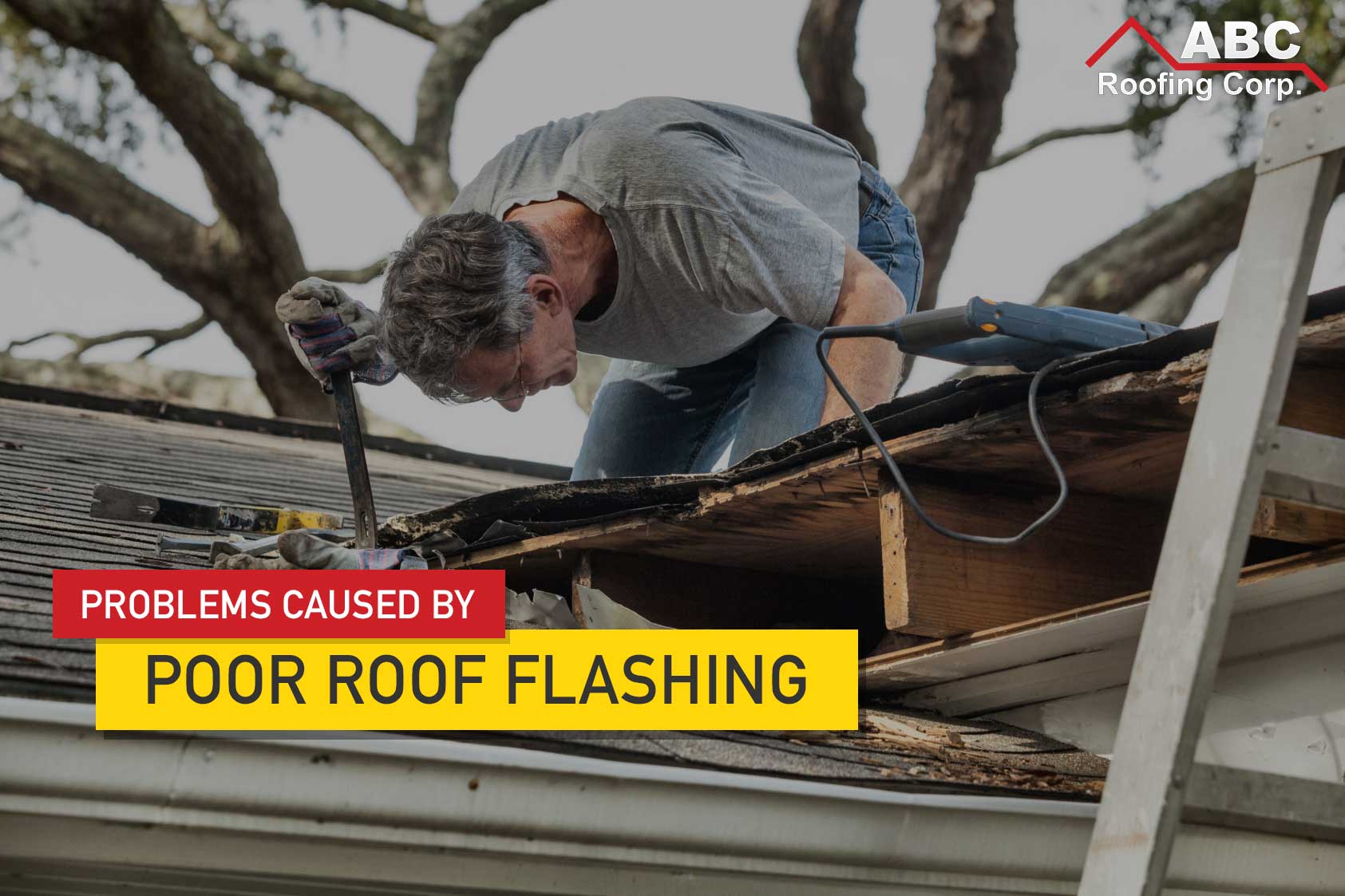
A roof is vital to the structure of your building. It protects the interior and exterior from weather and everyday wear and tear. Any problems with your roof could cause damage that threatens the structural integrity of your home or business. One of the most common roofing problems is defective flashing.
Defective Flashing
Flashing protects your roof’s joints and seams from excess water. These seams and joints are incredibly vulnerable parts of any roof. It’s composed of sheet metal and prevents water damage to your building. Over time the flashing can deteriorate from contraction and expansion that occurs because of changing weather patterns. Problems can also result from improper installation.
If you have leaks in your roof, the flashing is one of the first things you should check. Many flashing problems involve some type of damage to the membrane on your roof. It’s the membrane that protects your home from extensive weather damage and other kinds of roof damage. Here are some common problems associated with poor roof flashing.
Blow Offs
Open seams and joints will eventually lead to blow-offs where part or all of the roof blows off of your building. Flashing problems diminish the puncture resistance to a roof’s membrane. Reduced resistance to puncturing means that the membrane is more likely to puncture or tear once it separates from the roof’s substrate
This type of damage can result from poor installation or maintenance issues. Also, using cold adhesives that aren’t allowed to cure long enough before they’re exposed to high winds and rain can cause blow-offs. High winds such as hurricane-force gusts are typical causes of blow-offs, and these are quite common low-slope roof problems.
Billowing
Billowing occurs when large sections of the membrane detach and flutter with high wind. This damage also occurs from poor flashing installation or maintenance issues. It’s essential to address billowing immediately because it could lead to blow-off. A roofing professional may need to cut part of the membrane as an emergency fix. While cutting the membrane may allow water that’s gathered to penetrate the building, it will release the pressure on your roof preventing additional membrane detachment.
Tenting
Dimensional shortening of the membrane on a roof causes roof shrinkage, also known as bridging or tenting. This roofing problem happens when there is a dimensional change in the roof’s membrane. It applies additional pressure to the flashing and roof seams eventually causing a rupture. This shortening is irreversible.
Tenting must be addressed immediately before it tears open letting water into the building. It often causes dry spots beneath the flashing or penetration of the roof. Contact a roofing professional for an immediate assessment of your roof. They may need to cut the tented areas so that they can dry out. Then they’ll install new materials such as modified bitumen and roof mastic.
Professional Roofers
Damaged or poorly installed roof flashing can wreak havoc on your rooftop. Damage is imminent if your business or house is in a hurricane-prone area like Florida. It’s critical to contact a roofing expert so that they can evaluate any damage or weathering that the structure of your roof may have incurred. Only an expert can provide proper guidance and service your roof correctly so that you don’t experience significant property damage.
